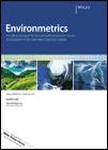版权所有:内蒙古大学图书馆 技术提供:维普资讯• 智图
内蒙古自治区呼和浩特市赛罕区大学西街235号 邮编: 010021

作者机构:Univ Washington Dept Biostat Seattle WA 98195 USA Seattle Childrens Res Inst 1920 Terry Ave Seattle WA 98101 USA
出 版 物:《ENVIRONMETRICS》 (环境计量学)
年 卷 期:2022年第33卷第4期
页 面:e2713-e2713页
核心收录:
学科分类:0830[工学-环境科学与工程(可授工学、理学、农学学位)] 08[工学] 0714[理学-统计学(可授理学、经济学学位)] 0701[理学-数学]
基 金:NIH/NIEHS [1R21ES024894 5R01ES026246]
主 题:low-rank matrix completion principal component analysis proximal algorithm spatial prediction
摘 要:In health-pollution cohort studies, accurate predictions of pollutant concentrations at new locations are needed, since the locations of fixed monitoring sites and study participants are often spatially misaligned. For multi-pollution data, principal component analysis (PCA) is often incorporated to obtain low-rank (LR) structure of the data prior to spatial prediction. Recently developed predictive PCA modifies the traditional algorithm to improve the overall predictive performance by leveraging both LR and spatial structures within the data. However, predictive PCA requires complete data or an initial imputation step. Nonparametric imputation techniques without accounting for spatial information may distort the underlying structure of the data, and thus further reduce the predictive performance. We propose a convex optimization problem inspired by the LR matrix completion framework and develop a proximal algorithm to solve it. Missing data are imputed and handled concurrently within the algorithm, which eliminates the necessity of a separate imputation step. We review the connections among those existing methods developed for spatially misaligned multivariate data, and show that our algorithm has lower computational burden and leads to reliable predictive performance as the severity of missing data increases.